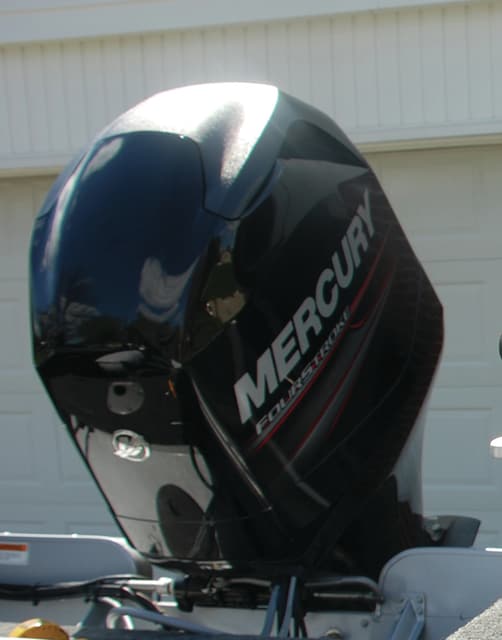
By Larry Moore
Ethanol has been around a number of years. Congress adopted the Renewable Fuel Standard (RFS) in 2005 and expanded it in 2007. The program requires the blending increasing volumes of renewable fuels with gasoline and diesel, culminating with 36 billion gallons in 2022. It is touted as smart conservation leading to lesser dependence on oil.
It has opened new markets for farmers. However, ethanol is not without issues and detractors. Many organizations associated with off-road engines, chains saws and marine motors are significantly opposed to the ever increasing use of ethanol.
After a number of delays and missed deadlines the US EPA issued standards to increase ethanol production. The announcement, in November 2015 was for 2015 and 2016. Scott Croft, Vice-President Public Affairs of the Boat Owners Association of the United States (Boat US) explains the issue, “The Renewable Fuel Standard legislation was to wean the US off oil, to conserve energy resources and utilize renewable resources. The law requires increased production of ethanol for blending into gasoline over time. The basic premise was that gasoline use would continue to rise, so the amount of ethanol that could be blended could also steadily increase. One part of the problem is that the production of ethanol is specified in gallons and not as percentage of gasoline use.
Today we are using less fuel. Americans are to be congratulated for conservation. Newer cars are more fuel efficient and more older cars have been taken out of use. Additionally, the economy resulted in many not driving as much. So fuel consumption is down while the law mandates an increase in ethanol use. The result is that a higher than 10 percent ethanol blend is required to meet the mandated production levels.”
Most equipment manufacturers only warranty their engines for a 10% ethanol blend. Automobiles designated as Flex Fuel may safely use higher blends of ethanol however only about 6% of the US auto fleet is flex fuel vehicles. Marine and off-road engines specifically state that the warranty will be voided if greater than 10% ethanol is used. According to the Renewable Fuels Association, vehicles that may not use E15 are model year 2000 and older cars, light-duty trucks, and medium-duty passenger vehicles.
Motorcycles may not use E15l. Off road engines also may not use E15. This list includes all-terrain vehicles, boats, snowmobiles, lawnmowers, chainsaws, weed eaters and vehicles with heavy-duty engines. Ethanol is blamed for many small engine failures relating to carburetors and fuel lines. Finally the energy content of ethanol is about one-third less than pure gasoline.
The problem is especially troublesome for people who may not use their fuel quickly. Other problems may arise from use in especially wet environments or winter storage. Ethanol is hydrophilic, which means it holds water. With regular gasoline and E10the primary cause of water collecting in tanks is condensation on tank walls.
Regular gasoline will absorb almost no moisture while E10 can hold up to half of one percent of water by volume. This water normally will burn harmlessly through the engine. However if phase separation occurs where the mixture separates and the water/ethanol mix is at the bottom of the tank then damage can occur. Additionally since the ethanol is an octane booster, the remaining gasoline at the top of the tank will not contain the proper octane for the motor and may also cause damage.
Croft adds, “Ethanol is a storage problem because it deteriorates quickly. So a ethanol fuel should be used quickly. That is not a problem for most people and automobiles. However for people who don’t drive as much or for equipment that is not in use, it can become a problem. Winter storage is an issue for boats with a built-in fuel tank. Boats are different than vehicles because boats have an open vented fuels system that draws air to the fuel so the tank breathes. This can accelerate phase separation. For winter storage, the tank should be filled nearly to the top and a quality fuel stabilizer designed for ethanol use used.”
In addition to BoatUS concerns for the marine industry, AAA released statement by President, Marshall Doney, stating, “’AAA is pleased to see the EPA acknowledge that there are real-world constraints that limit the amount of ethanol that can be safely blended into the fuel supply. Official recognition of the ‘blend wall’ may help protect consumers from using E15 gasoline in vehicles not designed for its use. It is too early to know whether the proposed targets will impact consumers given the uncertainties in future fuel demand. While ethanol can support jobs and promote energy independence, the EPA must ensure that the fuel consumers use does not lead to costly repairs due to misfueling.”
According to the US EPA website (www.epa.gov/renewable-fuel-standard-program/) The final 2016 standard for advanced biofuel is nearly 1 billion gallons, or 35 percent, higher than the actual 2014 volumes, while the total renewable standard requires growth from 2014 to 2016 of over 1.8 billion gallons of biofuel, or 11 percent higher than 2014 actual volumes.
Common sense indicates that the only way to reach the goals is to require higher blends of ethanol in the gasoline supply. In addition to the known engine damage and maintenance issues, ethanol produces approximately one-third less energy per gallon than gasoline. Certainly this will effect engine performance and auto fuel mileages.
Whatever the outcome, people who work and play in the outdoors must understand the impact ethanol can have on their engines, the potential for damage and also for the warranty to be voided. Consumers must educate themselves on yet another government mandated program with the best of intentions but less than desirable consequences.



